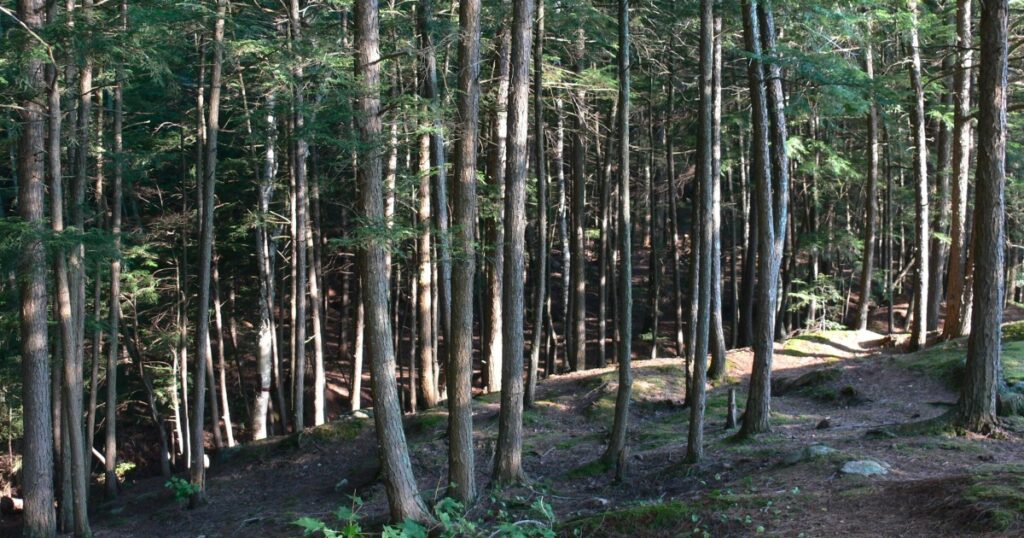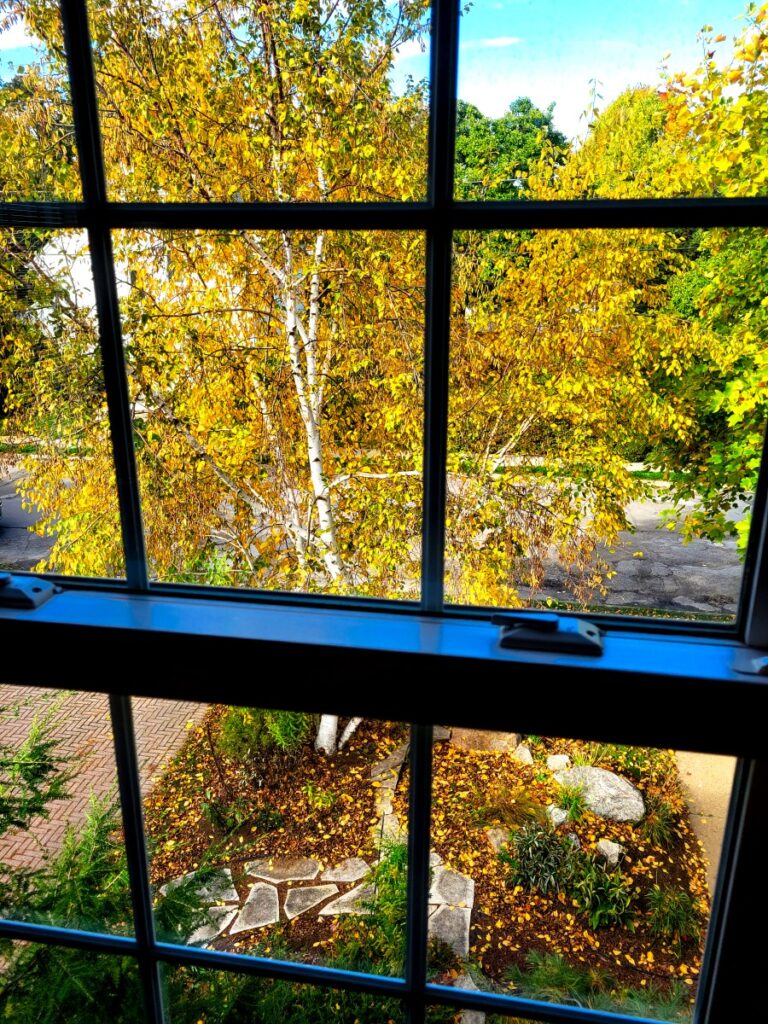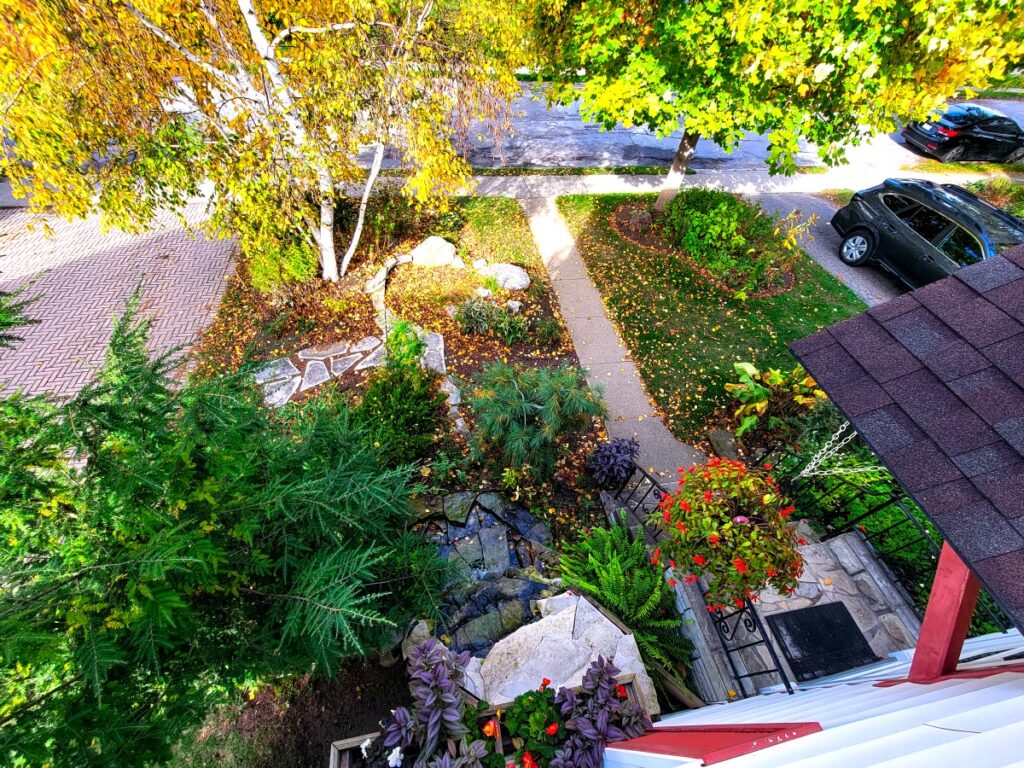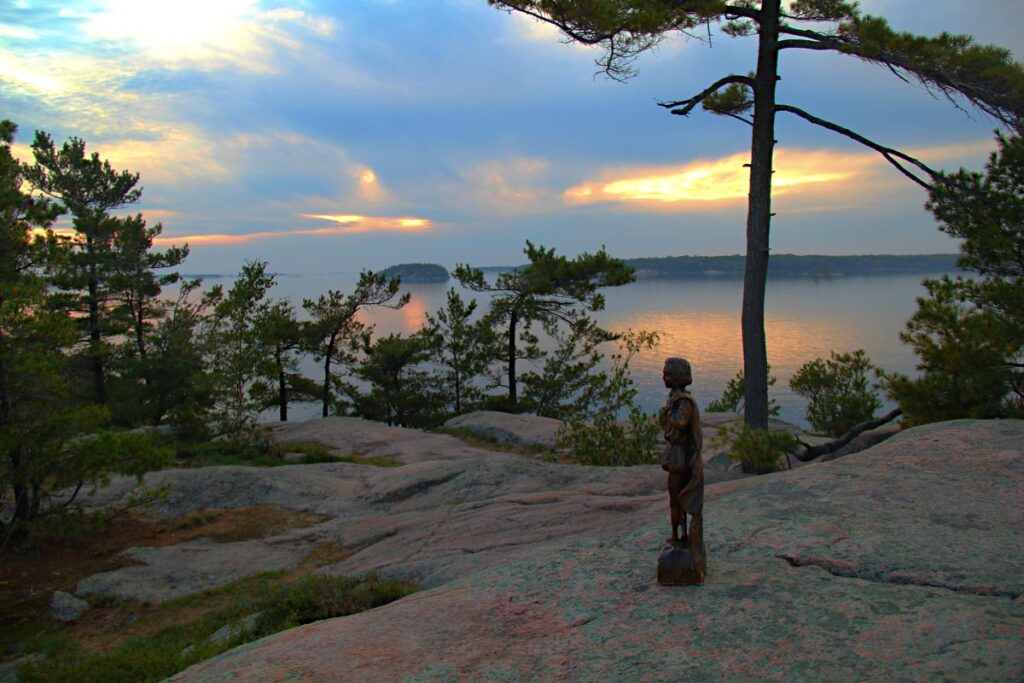Enchanting Views

There is nothing that I like better than just being in a wilderness. This gift of God — creation untamed, with its majestic arcs and amazing detail — is something to be cherished. But here I am, stuck in a city, where the wild beauty of the earth is tamped down by the busyness of living, amongst brick, steel and wood buildings, connected by miles of asphalt roads. Between too sporadic excursions, my imagination must survive on a sparse diet of memories, photos and occasional glimpses.
From earliest years on, travelling by car through Ontario, my gaze has wandered often (preferably as a passenger) to the passing landscapes. From the narrower, secondary roads, looking sideways, the rhythm of quickly passing crops and woodlot trees could be mesmerizing. And, from crests and dips, the vistas flash by and draw in as quickly as they are gone again.
Woods, as we called them, are intriguing. We had one behind our house on Dell Ave., and us kids explored and mapped the extensive Cathcart woods just up the street. Travelling — Sarnia to London — along the murderous three lane highway 22, there were few trees to be seen, but on the newer 402 there are goodly stretches of woods on either side – welcome lulls from buffeting winds and drifting snow.
Coming along side and into the Pinery, we were treated to its large expanse of Carolinian forest, and felt enveloped until we emerged again, each day, through dunes to face Lake Huron’s horizon. Years later, as we travelled north to camp with our own kids, we reveled in the transitions from country road, trees at bay, to wilderness highway, blasted out of the Canadian Shield, with forest crowding around, until we settled finally under our canopy of Algonquin pines.
Impenetrable, inaccessible
But, around here, the wood lots are few and far between — small patches on our quilted landscapes of farms and dwellings. They are too scattered to be whole, cordoned by edges that keep us out and the wild within.
Looking in from the open roads and beaches and rivers, unless the sun be with you, they seem forlorn, inscrutable and uneager to divulge the depths of their being. Unless there is reason and access to delve deeper and explore, some scrambles of trunks and branches and brush may never be known by any larger than small mammals.
Meaningless – all is meaningless, says the preacher tongue in cheek, also about impenetrable, inaccessible North American bush. But with my mind’s eye, I glimpse single, sample saplings or secluded, solitary clearings, back in from the edge, and I know that the tree grows ebulliently unperturbed, and that the clearing is home to all kinds of life, and that they don’t need us, ever, to be fulfilled.

It takes Tolkienesque imagination to fully comprehend these worlds beyond our experience, whether that be acres of private woodlots or vast expanses of forest out of our reach. All of them have remarkable depths of natural synergy and meaning, with unknown stories all their own.
Our wild side
Before our time and for such a long time, North America’s landscape was nothing but such synergy — sweeping, natural stories untouched by modern mega-project managers. There were no broad paths or artificial edges to divide and distract. And those living within were able to cultivate a deep knowledge of their forest gardens and of the vast river networks which connected them.
I like to imagine what it was like then — my neighbourhood, or ravine-riven Toronto, or the Sarnia savannah. It would be nice, just once, to hike through old woods from the lake shore to the escarpment or from High Park to Forest Hill, or along the beach from Centennial to Brights Grove, and see nothing but trees and meadows, streams and lake.
That memory is only a few hundred years in the past where we live, reverberating within the collective consciousness of our indigenous hosts and the recollections of early explorers. We do well to reach for and remember our wild side, even as we make ourselves at home and accept that God has placed us here with a purpose and that not every manifestation of man is a blemish on creation.
Wonder in the city
Undoubtedly, nature has been lost where the cities and towns now dwell. That’s the price we pay for being fruitful and multiplying. But cities too can be apples of God’s eye and places of wonder and wellbeing. Their architecture, commerce, community, gardens, twists and turns can be every bit as captivating as a forest glen. This is especially true in old European cities — our explorations, in 2023, of Barcelona, Amiens, Zwolle, Harlingen, Groningen, Brugge, Maastricht and Leipzig were wholly enchanting.
But, here I am again, stuck in an ordinary home, away from it all. I’ve no farm to tend, ravine lot to enjoy or long view from my deck or porch. Perhaps enchantment must be a state of mind and I should be seeding it, seeing it and seeking it more assiduously. Perhaps we should creatively celebrate what’s good more than we lament what’s been destroyed.

Today, as I look out of my front windows at the sun dappled bright whites and mellow yellows of the paper birch that I planted ten years ago, set within laboriously naturalized native plant gardens in my front yard, I can take pleasure from this small token of recreated wilderness in the middle of town. And the city folk who walk by might find it enchanting — perhaps also noting the architectural detail of our home’s red barrel vault cut into a formerly plain portico.
Meanwhile, far away wild spaces and city places still await my visits and my gratitude for the creative power that shaped them into countless wonders of this world.


Leave a Reply